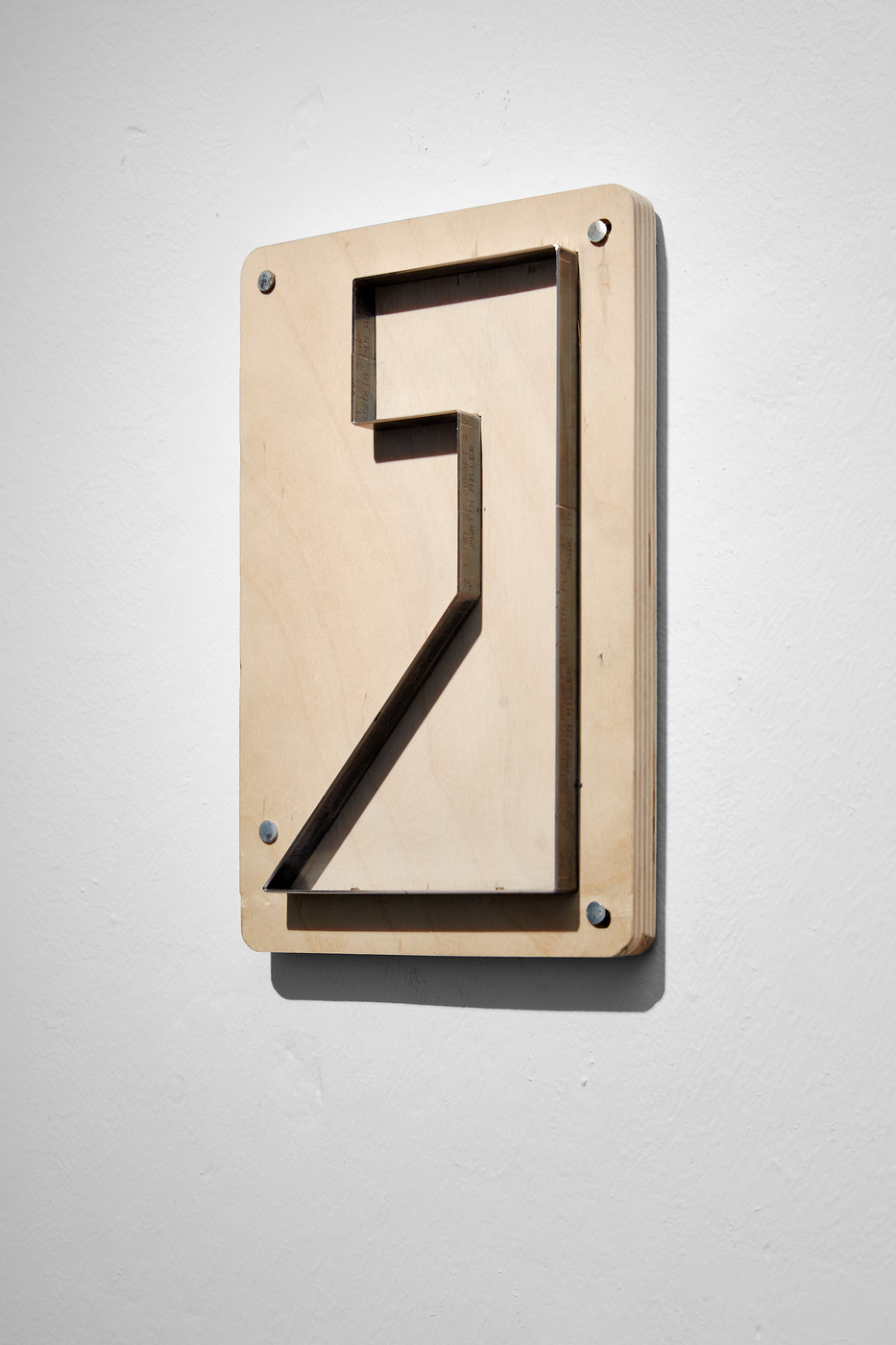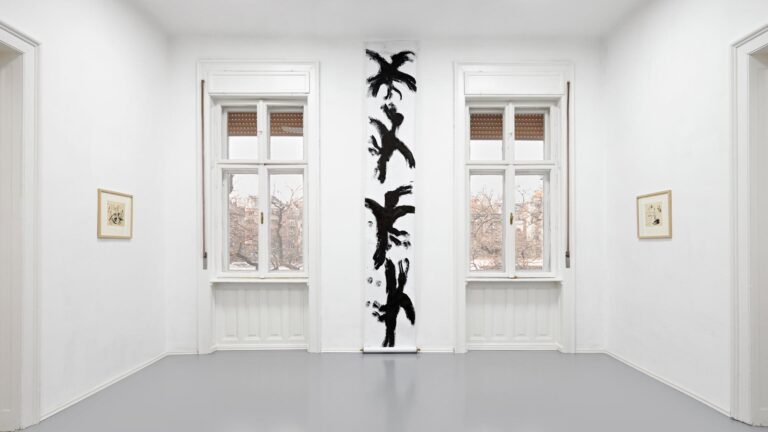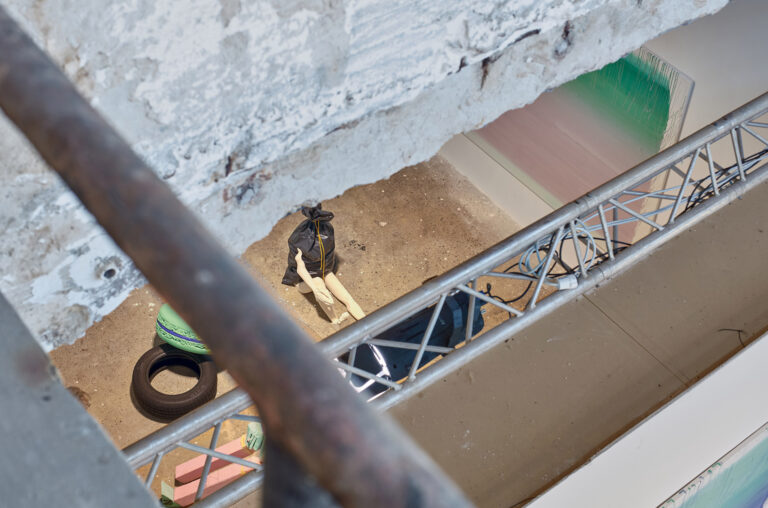Artists: Máté Dobokay, Gábor Kristóf
Exhibition title: Occam’s City
Curated by: József Mélyi
Venue: Labor, Budapest, Hungary
Date: March 24 – May 7, 2017
Photography: all images copyright and courtesy the artists and Labor, Budapest
Occam’s city could be an actual settlement or a philosophical parable applied to reality – but it is simply not realistic. It is an imaginary construction that hovers between the two-dimensional picture, a three-dimensional geometric structure and an urban model. Instead of the razor from the familiar logical metaphor, the starting point was an ordinary steel cutting die – a ready-made, found object. From the individually cut and layered cardboard elements a three-dimensional form emerges, and then with the aid of a computer program the solid body falls apart again into virtual flat surfaces. Out of the silhouette of one of these plane figures a cutting blade is made, and the steps are repeated: cutting, extruding, decomposing. Out of the basic pattern and its mutations a series of shapes comes into being of which the concrete object, the plane, the three-dimensional structure and the virtual construction are all part. The elements of the series appear in different ensembles on blueprints evoking the bases of old architectural drawings and reminding a virtual cityscape.
Laboratory experiments based on simple logic create the connection between the ordinary steel cutting blade and an urbanistic vision that seems to emerge from the past. The experimenters are a photographer and a painter: two picture-creators and virtual picture-decomposers. The imprint of their joint work recalls the ideas of the spatial, architectural and urban designs of Modernism, such as the folded, minimalist forms of Donald Judd, the illustrations of Buckminster Fuller’s lectures or the utopian architectural sketches of Soviet designers collected by El Lissitzky, which today are celebrated on one hand and regarded as failed attempts on the other. But the process, as a constructive experiment based on simple steps, consistently applying its own rules to create a new reality is much more significant than the final result or its historical parallels.




















